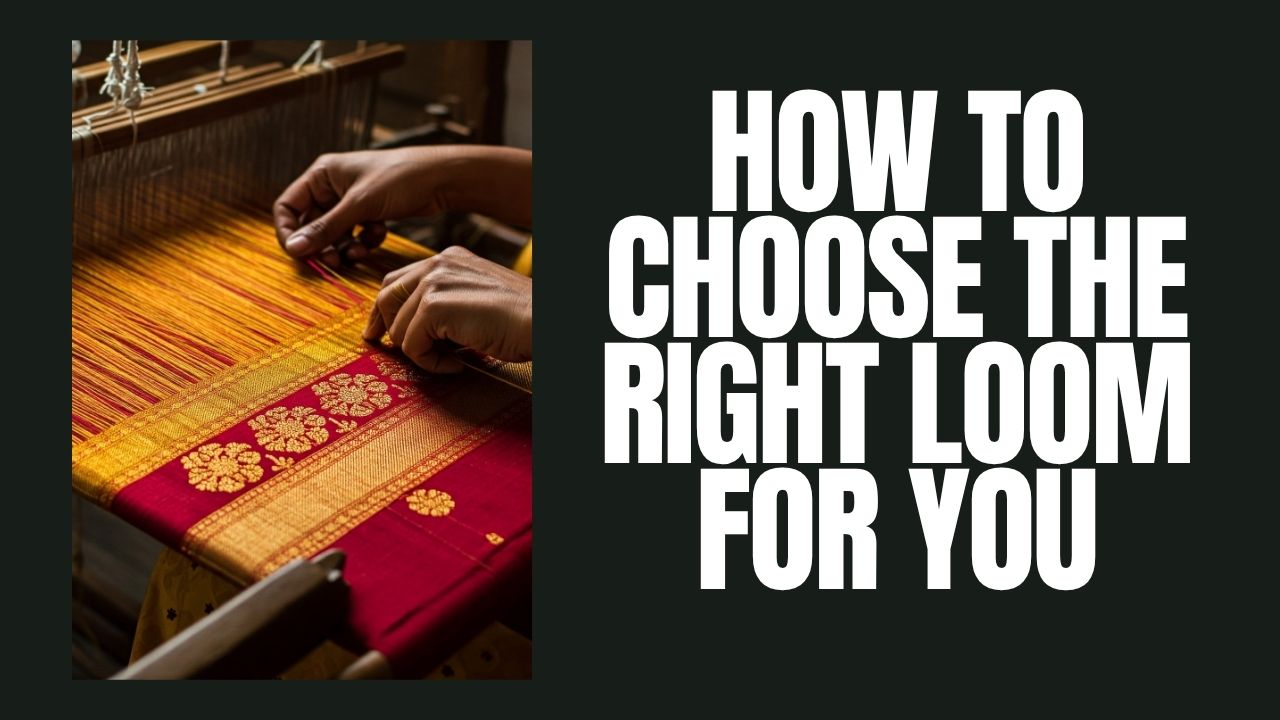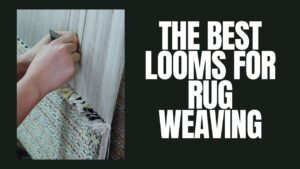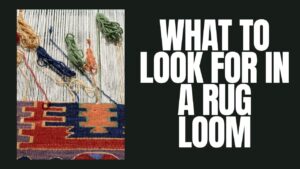The weaving world can be a confusing one when you first discover it. There are so many different types of looms, tools and materials, and it can be hard to know where to start.
What’s more, even if you’re a more experienced weaver, you might wonder what the next stage is in your weaving journey. Here I’m sharing a few thoughts on starter looms, larger looms, and my own dream looms for the future.
Starter Looms
A good starter loom if you’re thinking about learning to weave for the first time is a notched frame loom. I always recommend the ones from Funem Studios as they are good, solid looms and simple to set up.
As well as trying a notched loom, you could also think about using a tapestry frame. These are what professional tapestry weavers use for their weaving samples. They’re a bit more work to set up, but give you much greater flexibility. They’re the looms I use in my Geometric Weaving course, and sell in my Tapestry Weaving Kits.
Next Step Looms
Once you’re confident weaving on a simple upright loom, you could explore a more advanced loom. For tapestry or rug weaving, I recommend Mirrix looms. If you want to try weaving cloth, I recommend rigid heddle or table looms.
All of these are compact looms don’t take up too much space, but they also allow you to create longer weavings, and experiment with more complex weaving techniques.
On Mirrix looms, the shedding device allows you to easily raise and lower the warps while you weave, and the adjustable sides and warping bar allow you to weave a continuous warp around the loom. If you’re keen to learn more about using a Mirrix loom, check out our Rug Weaving On A Mirrix Loom online course.
For rigid heddle and table looms, you are spoilt for choice! Personally I’m a fan of the vintage varieties from Dryad and Harris. But if you’re looking for something a bit more up to date, I recommend the Ashford loom range.
And if you’re looking for inspiration on what’s possible on looms like this, check out the work of Hannah Waldron, Jennifer Mao and Amy Spires.
Larger Looms
If you’ve already got a rigid heddle or table loom, you may be thinking about your next step and getting a larger loom. Here you’ve got so many different loom makers to choose from- Ashford, Louet, Harrisville and Glimakra to name just a few. However my personal favourite floor loom for beginners is the LeClerc looms from Canada.
I have a 4-shaft Fanny II loom from them which has served me well for 4 years now. It’s even the loom I used for my Rug Weaving On A Floor Loom online course.
If you can’t get hold of a LeClerc- don’t worry! There are lots of solid and straightforward floor looms out there. My only recommendation would be to start by getting a counterbalance or jack loom. These looms are much more straightforward to set up than their more complex cousins- countermarch looms (more on that below).
Dream Looms
Now we come to the category I like to call “looms I would get if I had a studio the size of an aircraft hanger”. For me this includes the LeClerc Gobelin loom which has a 100” weaving width! I’m also obsessed with the huge rug looms from the Marta Maas Fjetterstrom studio.
If you’re looking to scale up your weaving practice, it’s also worth looking at getting a countermarch loom. As I mentioned earlier they are more difficult to set up but they allow for much greater complexity and scale for your weaving output.
The Glimakra USA website has some great resources if you’re thinking about getting a countermarch loom, and their looms are some of the best out there.
Whatever stage you’re at in your weaving journey, I hope this has given you some ideas. And if there are any dream looms that you think I should add to my dream huge studio- let me know 😉



